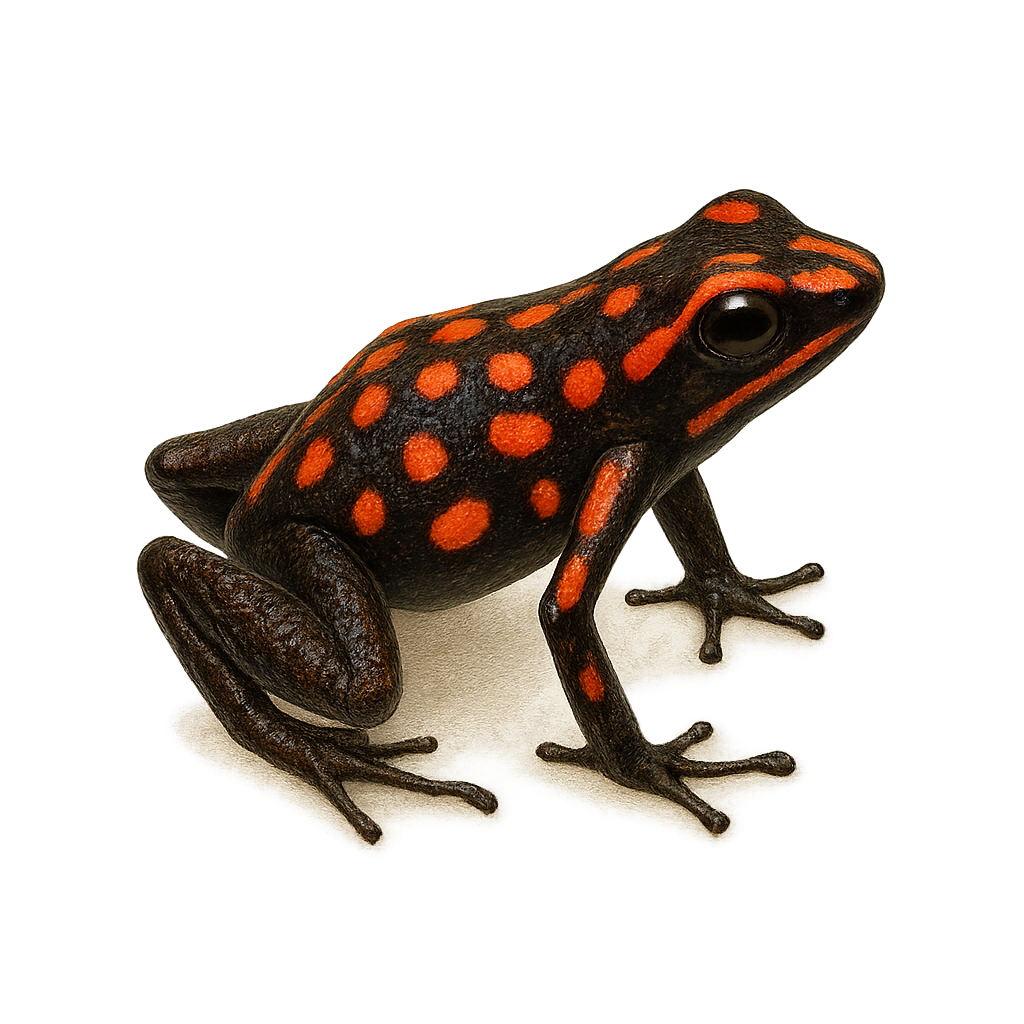Your wildlife photography guide.
Explore the doris' poison frog in detail, study its behavior, prepare your shots.
Where to observe and photograph the doris' poison frog in the wild
Learn where and when to spot the doris' poison frog in the wild, how to identify the species based on distinctive features, and what natural environments it inhabits. The WildlifePhotographer app offers tailored photography tips that reflect the doris' poison frog’s behavior, helping you capture better wildlife images. Explore the full species profile for key information including description, habitat, active periods, and approach techniques.
Doris’ poison frog
Scientific name: Andinobates dorisswansonae

IUCN Status: Endangered
Family: DENDROBATIDAE
Group: Amphibians
Sensitivity to human approach: Suspicious
Minimum approach distance: 3 m
Reproduction period: February to March
Incubation: 10–14 jours
Births: March to April
Habitat:
Humid rainforests, dense undergrowth, areas near water streams
Activity period :
Primarily active during the day, with peak activity in the morning and late afternoon.
Identification and description:
The Doris Swanson's Poison Frog, Andinobates dorisswansonae, is a fascinating species from the Dendrobatidae family. Endemic to the humid rainforests of Colombia, it primarily inhabits dense undergrowth and areas near water streams. This small frog, measuring about 2 cm, is renowned for its bright coloration, ranging from yellow to red, serving as a warning signal to potential predators. Indeed, it secretes powerful toxins through its skin, a common trait among poison frogs. Its behavior is generally suspicious, making it difficult to observe in its natural habitat. It plays a crucial role in the ecosystem by regulating insect populations. Unfortunately, it is threatened by deforestation and habitat loss.
Recommended lens:
Macro – adjust based on distance, desired framing (portrait or habitat), and approach conditions.
Photography tips:
To photograph the Doris’ poison frog, it's essential to approach slowly and remain discreet, as it is suspicious and easily hides. Use a macro lens to capture the details of its colorful skin and unique patterns. Natural light is ideal, but a diffused flash can be used to highlight the vivid colors. Be mindful of the environment to avoid disturbing its fragile habitat. Patience is key to obtaining exceptional shots of this rare and endangered species.
The WildlifePhotographer App is coming soon!
Be the first to explore the best nature spots, track rutting seasons, log your observations, and observe more wildlife.
Already 1 432 wildlife lovers subscribed worldwide

